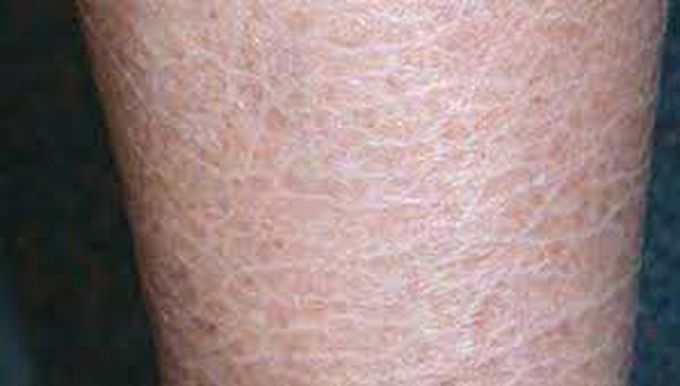


What are the symptoms of ichthyosis vulgaris?
Symptoms of ichthyosis vulgaris include: Dry, itchy skin Thick, rough skin that looks dirty, most noticeably on the palms and soles of the feet White, gray or brown scales on the front of the legs, back of the arms, scalp, back or stomach. If scales appear on the face, it’s mostly on the forehead and cheeks. Sometimes the edges of the scales curl, making the skin feel rough. Extra lines on the palms of the hands and the soles of the feet. The lines may run deep in severe cases, causing cracks in the skin. If the cracks are deep enough, an infection may develop. Rough bumps on the arms, thighs and buttocks (keratosis pilaris). The bumps are often mistaken for acne blemishes. Inability to perspire (sweat) adequately. This happens in severe cases and can cause overheating (because perspiration cools down the body). Many patients don’t realize they have ichthyosis vulgaris because symptoms can be so mild. They simply believe their skin is dry, so they apply moisturizer, which can reduce scaling. Ichthyosis vulgaris tends to get worse during the winter, when cold and dry air can cause symptoms. In the summer, the disease can virtually disappear because of the warm, moist air. Sometimes patients notice ichthyosis vulgaris symptoms before they are diagnosed with more serious diseases. On the other hand, ichthyosis vulgaris symptoms sometime appear years after patients are diagnosed with more serious conditions.

